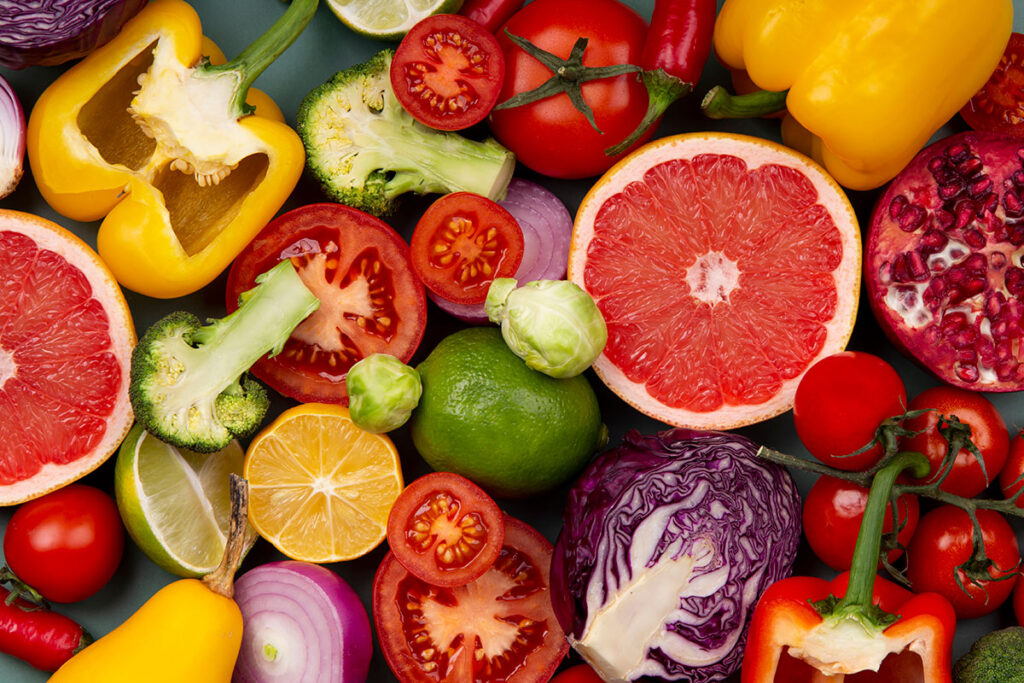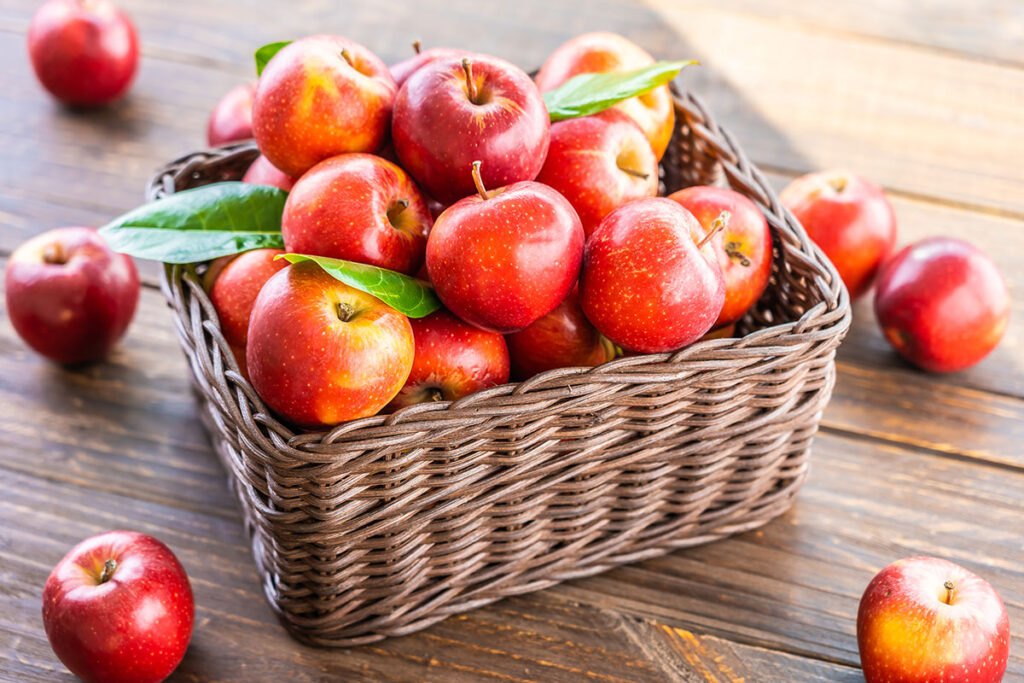
It can be challenging to navigate the aisles of the grocery store. Especially when you’re trying to nourish your body with whole, nutritious foods. But fear not! With a bit of awareness, you can fill your cart with ingredients that help you heal.
Choose Whole Foods

Image by Freepik
You want to avoid heavily processed foods. But, not all “healthy” foods are the same. Here are some tips to help you identify and avoid sneaky ingredients that may not serve your body well.
Tips for choosing whole foods:
- Scan Ingredient Lists. When shopping for packaged foods, always take a moment to glance at the ingredient list. Look for foods with minimal, recognizable ingredients. Avoid products with lengthy lists full of unfamiliar additives and preservatives.
- Look for Hidden Sources. Hidden gluten can lurk in foods. Watch for modified food starch, maltodextrin, and hydrolyzed vegetable protein. Look for products labeled gluten-free to avoid gluten-related issues.
- Stay Clear of Whey. Whey is a byproduct of dairy processing and is a common ingredient in many processed foods. Dairy is known to cause more flares in people with multiple sclerosis (MS). Read all ingredient labels and avoid hidden sources of whey.
- Beware of MSG. Monosodium glutamate (MSG) is a common flavor enhancer found in many processed foods. While it may make food taste more enticing. MSG damages the function of the nervous system. It also triggers unwanted symptoms like headaches and fatigue.
- Check for Processed Citric Acid. Citric acid comes from citrus fruits but not all citric acid is equal. Processed citric acid can come from GMO sources like corn. Avoid products that include processed citric acid.
- Steer Clear of Artificial Flavors. Artificial flavors have little to no nutritional value plus, they include chemical additives. Instead, use herbs and spices to add flavor.
- Avoid Artificial Sweeteners. They may seem like a healthier alternative to sugar. But, artificial sweeteners like aspartame, saccharin, and sucralose have many health concerns. This includes digestive issues and metabolic disturbances. Instead, choose natural sweeteners like honey and maple syrup. Or simply enjoy the natural sweetness of whole fruits.
- Avoid GMOs. GMOs stands for genetically modified organisms (GMOs). They’re linked to many health concerns, including inflammation and digestive issues. Whenever possible, choose organic to reduce your exposure to these potentially harmful ingredients. The top three GMO foods are corn, canola, and soy.
- Watch Out for Natural Flavors. While the term “natural flavors” sounds safe, it can include food additives. Natural flavors come from plant or animal sources, but they’re also synthesized in a lab. Because of lax labeling regulations, it’s difficult to know what’s in natural flavors. Instead, use products that use whole ingredients rather than “natural flavors.”
- Watch Out for Farm-Raised Fish. Fish from farms might have chemicals like antibiotics and pesticides. They use these to keep the fish healthy in crowded spaces. But these chemicals can be bad for you when you eat the fish. Instead, buy wild-caught fish. Avoid Atlantic wild-caught salmon, they’re mostly escaped farm-raised fish. Look for farm-raised fish raised sustainably without harmful chemicals. Look for “organic” or “sustainably sourced” labels for the healthiest fish and environment.
Before purchasing any packaged foods, always scan the ingredient list to identify any ingredients to watch out for. If it’s not a whole food ingredient – don’t buy it. Check the Environmental Working Group website for produce with the most pesticides.
Although MSG has proven its value as an enhancer of flavour, different studies have hinted at possible toxic effects related to this popular food-additive. These toxic effects include CNS (central nervous system) disorder, obesity, disruptions in adipose tissue physiology, hepatic damage, CRS and reproductive malfunctions.
– National Library of Medicine
Watch Out for Wax

Image by lifeforstock on Freepik
It’s important to watch out for wax on certain foods because they can contain additives that might not be good for your health. The wax can come from natural sources, but sometimes it’s made with chemicals. When you eat foods with wax, you might also be eating these chemicals. So, it’s a good idea to choose foods without wax or ones where you can remove the wax before eating. This can help you avoid eating unwanted chemicals and keep your body healthy.
Apples. Have you ever noticed that shiny coating on apples? While it may make them look more appealing, it’s often a layer of food-grade wax applied. They use it to help preserve freshness and make it more appealing. However, some types of wax contain synthetic additives or residues. Instead, choose organic or locally grown apples whenever possible to reduce your exposure.
Cucumbers. Similar to apples, cucumbers are also covered with wax. It’s best to buy organic cucumbers or peel them to remove any residues.
Citrus Fruits. Oranges, lemons, and other citrus fruits are also commonly waxed. It’s used to maintain their glossy appearance and prevent moisture loss. Look for organic especially if you’re planning on using the zest.
Bell Peppers. Sometimes, they wax bell peppers to help protect them during transportation and storage. Choose organic or locally grown bell peppers whenever possible to minimize your exposure.
Tomatoes. While not as common, some tomatoes may have wax to prolong their shelf life. Again, choose organic or locally grown tomatoes to help reduce your exposure.
Minimize your exposure to wax by choosing organic or locally grown produce. Be mindful of the presence of wax on certain foods and choose organic whenever possible. To heal your body, nourish it with wholesome and nutritious ingredients
The Role of Diet in Managing MS

Image by senivpetro on Freepik
Now, you might be wondering, why is it so important to pay attention to what you eat. Well, the truth is, what you eat plays a huge role. Not only with MS but for your overall health and well-being. Including other chronic diseases such as heart disease and diabetes.
A healthy diet helps:
- Reduces Inflammation. Many processed foods include inflammatory ingredients. By choosing whole, nutrient-dense foods, you can help reduce inflammation in the body.
- Supports Healing. Fruits and vegetables contain vitamins, minerals, and antioxidants. They help your body heal naturally. Include lots of fruits and veggies, some lean meats, and healthy fats in your meals. These give your body the nutrients it craves to fix and renew damaged tissues. It could boost your life quality.
- Boosting Energy Levels. Eating a balanced diet with healthy foods can keep your energy levels steady all day. When you eat well, you fight tiredness and keep your energy high. That way, you can enjoy the things you love without feeling worn out.
Eat a diet that includes lots of fruits, vegetables, herbs, and spices. They are high in antioxidants, fiber, minerals, phytonutrients, and vitamins – everything you need to heal. An anti-inflammatory diet lowers inflammation that’s linked to serious health conditions like multiple sclerosis (MS).
To start an anti-inflammatory diet read: How To Start An Anti-Inflammatory Diet
Ingredients to Watch Out For

When browsing through food labels, it’s important to keep an eye out for ingredients to watch out for, as they can impact your overall health and well-being. By being mindful of these ingredients and making informed choices, you can take control of your diet and support your journey towards better health.
Besides the ones mentioned earlier, watch out for high-fructose corn syrup and hydrogenated oils which can have bad effects on your health. By reading labels carefully, you can avoid these harmful ingredients and make healthier decisions for yourself and your family.
Educating yourself about common ingredients to watch out for helps you to make healthier choices and take charge of your diet. Remember, adopting a healthier lifestyle is a journey, not a destination – healing the central nervous system takes time. Celebrate the small victories along the way and be kind with yourself as you navigate this path.
Pay attention to what you eat. Pick whole foods that make your body strong. This helps you do well, even with challenges due to MS.

The Ultimate Guide to Surviving & Thriving with MS
Unlock the key to a vibrant life with multiple sclerosis by subscribing to my newsletter and gaining exclusive access to ‘The Ultimate Guide to Surviving & Thriving with MS.’ It’s packed with valuable information on natural management strategies and clean health lifestyle practices that you can start today.
Want to remember this health tip? Pin it to your Pinterest board!

Image by gpointstudio on Freepik
Ingredients to Watch Out for When Shopping for Whole Foods





